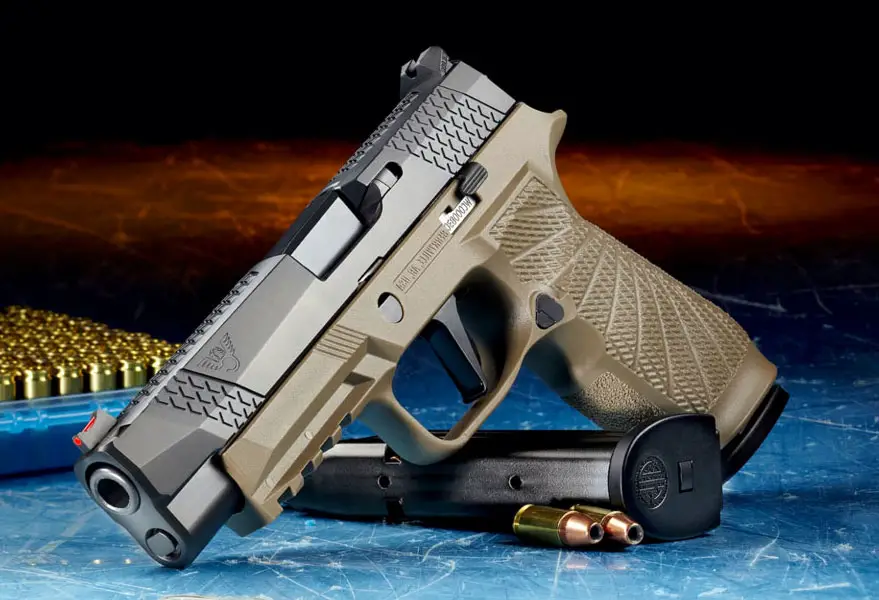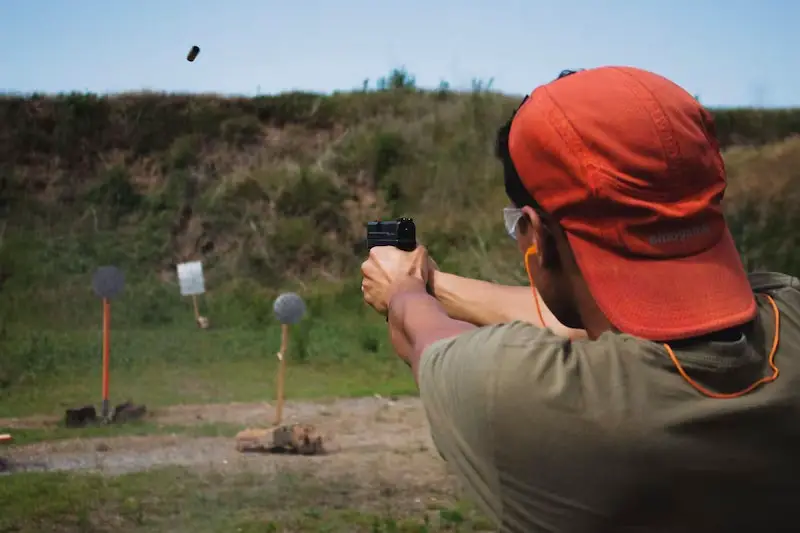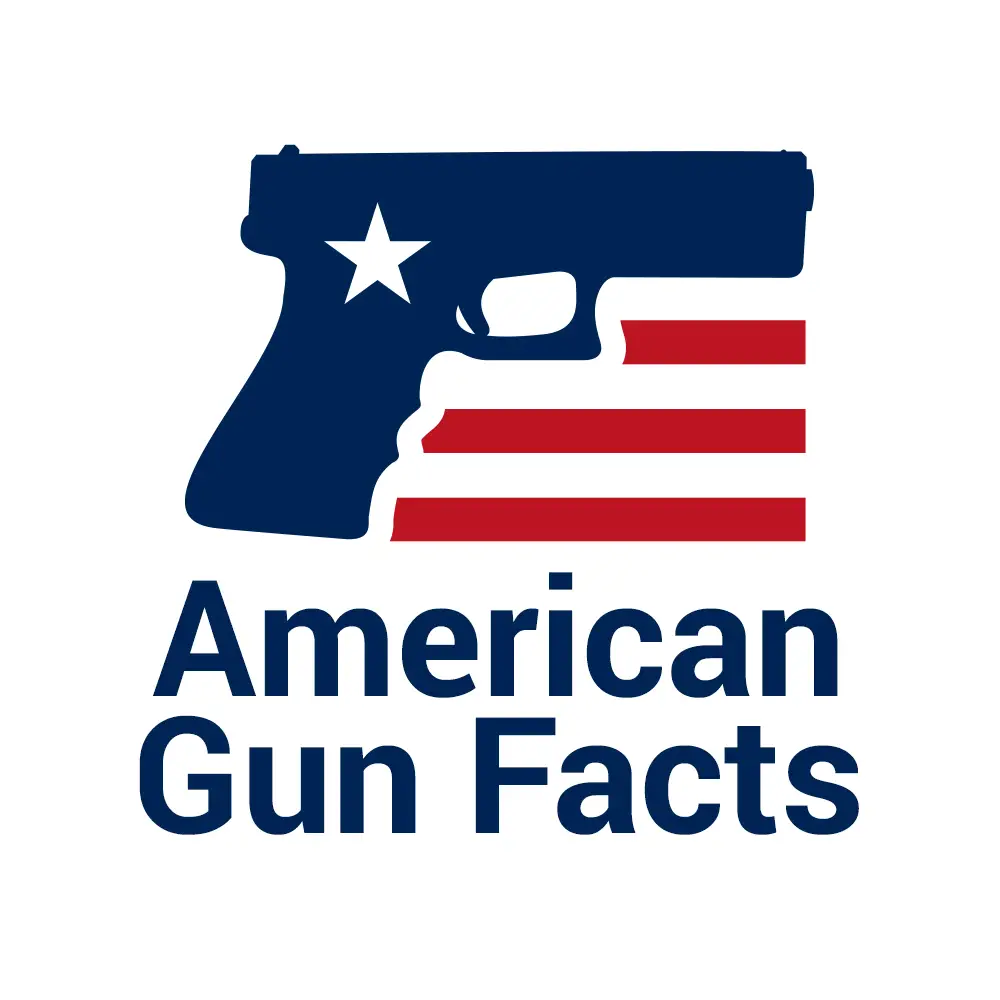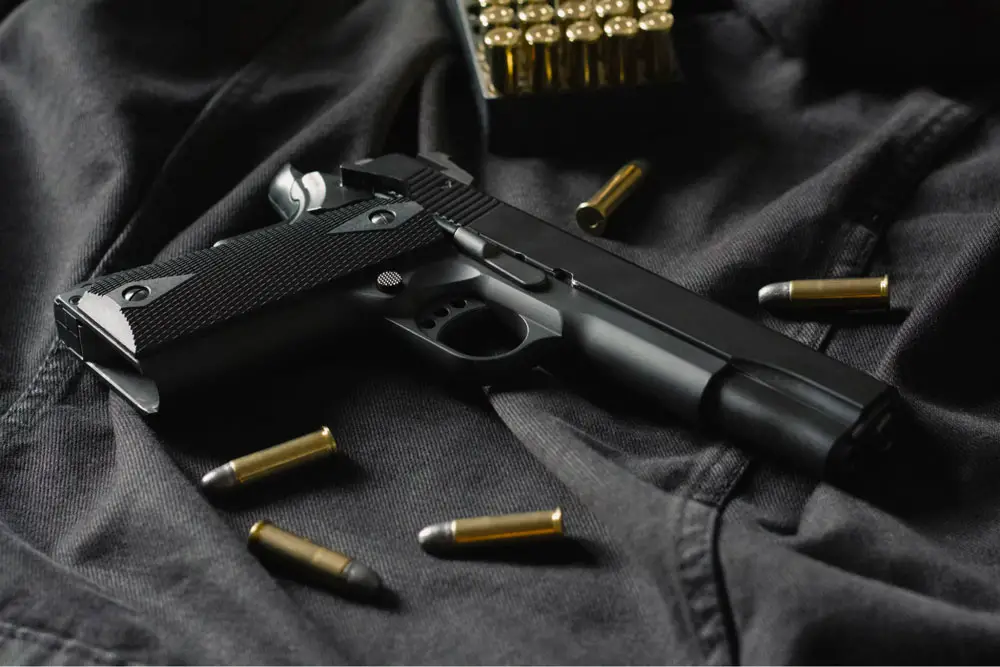In a way, shooting guns is similar to driving a car. If you don’t drive safely and systematically break the road rules, you may end up in a car accident that can entail injuries or loss of human life. It’s the same story with guns. The only difference is that following gun safety rules is several times more vital because, well, guns were designed to kill in the first place.
People don’t break or neglect shooting safety rules because they think it’s cool. The majority of us genuinely want to be good. So, in most cases, new shooters make mistakes merely because they lack experience and mentorship.
We’d like to fix that. Reading articles doesn’t equal field practice, but we believe this post on firearm safety rules will help you grow conscious of the essence of some mistakes and prompts you to avoid them on the range, in your backyard, or in a hunting area.
The 4 Rules of Gun Safety
1. Always keep the muzzle in a safe direction.

In other words, don’t muzzle anyone or anything you don’t intend to destroy. The rule is straightforward, agree? Yet, beginner shooters break it all the time.
Say you want to holster your pistol. You reach the holster with your non-dominant hand to aid in holstering, and, guess what, your wrist crosses the muzzle line. That’s a no-go. Another mistake is when you turn the pistol lateral side to the chest to rack the slide. In such a position, you point your gun to the side, away from your safe zone of fire. Such mistakes are specific to handgun shooters simply because handguns are small weapons, so the room for error instantly expands.
If you want an example of the negligent handling of a rifle or shotgun, here’s one – placing the muzzle to rest on your foot. Even if you know your firearm is fully unloaded, please, don’t do that. Don’t develop this habit.
So, you must always control the direction of your muzzle and avoid pointing it at someone or something you don’t intend to hit with a bullet.
2. Keep your gun in a safe condition when not using it.

In other words, load your firearm only when ready to shoot and unload when not using it. If you’re not in the field, on the range, or in any other shooting area, keep ammunition and your firearm separate from each other and in a safe place to exclude the scenarios of getting hold of your gun and ammo by children or spiteful people.
Unload your firearm in three (two for bolt- and lever-actions) steps. Let’s take M4 rifles. Say you’ve fired a couple of rounds and engaged the safety. The first step is to eject the magazine. Then, you need to clear the chamber from the live round inserted by the system cycling. All you need to do is lean the stock against your body while keeping the rifle pointed in a safe direction and pull the charging handle, which will cause the live round to drop out. After that, you should visually inspect and feel the chamber. Once it’s empty, your rifle can be considered fully unloaded.
Let’s take another example. Say you’ve fired your 6.5 Creedmoor bolt-action rifle and want to unload it. First, you cycle the bolt to eject the spent cartridge. Continue to cycle the bolt until all live rounds are ejected. Then, open the trapdoor at the bottom to make sure no rounds have stuck.
Unload your semi-auto pistol as you would a semi-auto rifle. After you’ve engaged the safety, release the magazine. Rack the slide two times, one to eject the cartridge and another to double-check. Then, pull the slide to the rear and inspect the chamber.
After the unloading, leave the action open. It’s considered a safe condition of the firearm.
3. Place your finger on the trigger only when ready to shoot.

Again, a very simple rule, but following it can be challenging. You may get distracted or forget to remove your finger after you’ve done a shot sequence. Train your mind and body until your actions are automatic.
Though the rule says you must keep the finger off the trigger, it doesn’t mean you should rest it on the trigger guard instead. Place your trigger finger on the portion on the frame above the trigger guard so that it’s not seen from the other side.
4. Identify your target and know what’s in your line of fire.

At this point, you must understand that you’re responsible for every bullet fired from your gun until it stops moving. That means you must be sure not only of your target but also know what is in front of and behind it. When defending yourself, make sure you can’t stop that threat by any means but a gunshot. When hunting animals, identify your potential prey using binoculars, not a scope.
Remember that you’re also responsible for all projectiles that over-penetrate or miss the target and hit an innocent person standing in the line of fire. Don’t shoot your firearm when someone is standing near your target or when you’re not sure what’s behind it.
Also, don’t shoot at hard, flat surfaces like rocks and steel because projectiles can ricochet.
Bonus. Always treat all guns as if they are loaded.
Basically, this rule encourages you to treat every firearm with the same respect you would show to a loaded one. Let’s repeat:
- Always keep the muzzle of your firearm in a safe direction,
- Unload the gun when it’s not in use,
- Place your finger on the trigger only when ready to shoot,
- Know your target and what’s in the line of fire.
So, these are five basic rules for safe shooting. We also have some additional safety recommendations for you:
- Don’t rely on the firearm’s safety. The safety is a supplement that doesn’t relieve you of the responsibility to use common sense when handling a gun.
- Use correct ammo. Don’t use cartridges of improper caliber or gauge. If you want to hand-load or reload ammunition, follow the recommendations specified in a reputable handloading manual. Don’t shoot wet ammo.
- Learn how to clear malfunctions safely.
- When shooting, wear eye and ear protection.
- Control your emotions.
- Don’t mix alcohol, drugs, and guns.

Researched and written by the American Gun Facts team. We are a group of Americans dedicated to providing factual information on firearms and fighting back against attempts to weaken or discard the Second Amendment. We write on topics ranging from firearm statistics, news, reviews, and more! AGF has been featured in the New York Times, NBC, MSN, Time, & many other publications.
